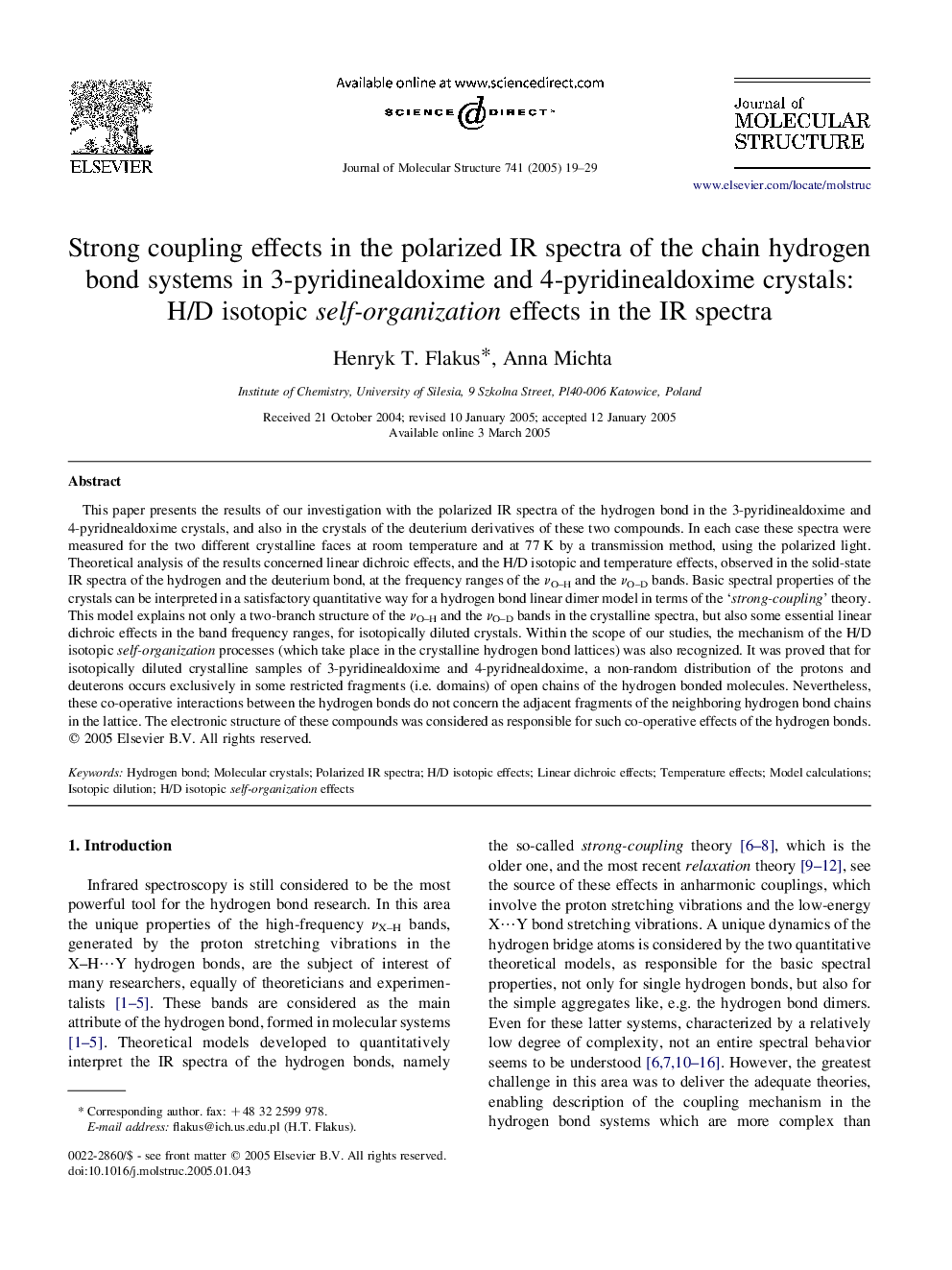| کد مقاله | کد نشریه | سال انتشار | مقاله انگلیسی | نسخه تمام متن |
|---|---|---|---|---|
| 9770203 | 1501942 | 2005 | 11 صفحه PDF | دانلود رایگان |
عنوان انگلیسی مقاله ISI
Strong coupling effects in the polarized IR spectra of the chain hydrogen bond systems in 3-pyridinealdoxime and 4-pyridinealdoxime crystals: H/D isotopic self-organization effects in the IR spectra
دانلود مقاله + سفارش ترجمه
دانلود مقاله ISI انگلیسی
رایگان برای ایرانیان
کلمات کلیدی
موضوعات مرتبط
مهندسی و علوم پایه
شیمی
شیمی آلی
پیش نمایش صفحه اول مقاله

چکیده انگلیسی
This paper presents the results of our investigation with the polarized IR spectra of the hydrogen bond in the 3-pyridinealdoxime and 4-pyridnealdoxime crystals, and also in the crystals of the deuterium derivatives of these two compounds. In each case these spectra were measured for the two different crystalline faces at room temperature and at 77 K by a transmission method, using the polarized light. Theoretical analysis of the results concerned linear dichroic effects, and the H/D isotopic and temperature effects, observed in the solid-state IR spectra of the hydrogen and the deuterium bond, at the frequency ranges of the νO-H and the νO-D bands. Basic spectral properties of the crystals can be interpreted in a satisfactory quantitative way for a hydrogen bond linear dimer model in terms of the 'strong-coupling' theory. This model explains not only a two-branch structure of the νO-H and the νO-D bands in the crystalline spectra, but also some essential linear dichroic effects in the band frequency ranges, for isotopically diluted crystals. Within the scope of our studies, the mechanism of the H/D isotopic self-organization processes (which take place in the crystalline hydrogen bond lattices) was also recognized. It was proved that for isotopically diluted crystalline samples of 3-pyridinealdoxime and 4-pyridnealdoxime, a non-random distribution of the protons and deuterons occurs exclusively in some restricted fragments (i.e. domains) of open chains of the hydrogen bonded molecules. Nevertheless, these co-operative interactions between the hydrogen bonds do not concern the adjacent fragments of the neighboring hydrogen bond chains in the lattice. The electronic structure of these compounds was considered as responsible for such co-operative effects of the hydrogen bonds.
ناشر
Database: Elsevier - ScienceDirect (ساینس دایرکت)
Journal: Journal of Molecular Structure - Volume 741, Issues 1â3, 2 May 2005, Pages 19-29
Journal: Journal of Molecular Structure - Volume 741, Issues 1â3, 2 May 2005, Pages 19-29
نویسندگان
Henryk T. Flakus, Anna Michta,